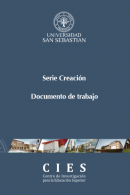
Thermal and photo stability of glutathione-capped cadmium telluride quantum dots
| PROCEDENCIA(S): | Ciencia y Medicina, USS Santiago. |
|---|---|
| CATEGORÍA(S): | Bioquímica, Ciencias Químicas. |
| AUTOR(ES): | Poorna T. Wansapura / Waldo A. Díaz-Vásquez / Claudio C. Vásquez / José M. Pérez-Donoso / Thomas G. Chasteen. |
| TIPO DE MATERIAL: | Artículos, Investigación. |
| ARCHIVO: |
 Reconocimiento CC BY. Esta obra está bajo una Licencia Creative Commons Reconocimiento CC BY 4.0 Internacional.
Reconocimiento CC BY. Esta obra está bajo una Licencia Creative Commons Reconocimiento CC BY 4.0 Internacional.
Nanoparticles (NPs) are increasingly being used in a number of applications that include biomedicine, biological labeling and cancer marker targeting, and their successful storage is important to preserve their viability. A systematic investigation of he thermal and photo stability of chemically stabilized cadmium telluride (CdTe) quantum dots (QDs) under various storage conditions either in solution or as dried nanoparticles has not been published. Here we report experiments involving chemically synthesized glutathione-capped CdTe QDs whose photoluminescence spectra were examined initially and then periodically during storage times up to 76 days. Methods: Samples of dried QDs or QDs in solution (water or buffered) were examined under different light conditions including complete darkness, constant 12,000 lux incident light, and under diurnal sunlight; at temperatures ranging from -80°C to room temperature. Results: Though QDs stored in solution in the dark at -80°C lost only 50% of peak fluorescence (FL510) within 2 weeks, solution-stored QDs exposed to sunlight at room temperature showed FL510 drops of 85% in the first 24 hours. In contrast, QDs precipitated from aqueous solution, dried and stored in time course experiments in the presence of atmospheric oxygen – when resuspended in water – lost an average of only 12% FL510 over 76 days under all conditions tested, even in direct sunlight. Conclusions: Glutathione-capped CdTe particles can be stored as dried nanoparticles for extended periods of time, enhancing their viability in biomedicine, biological labeling and cancer marker targeting.



